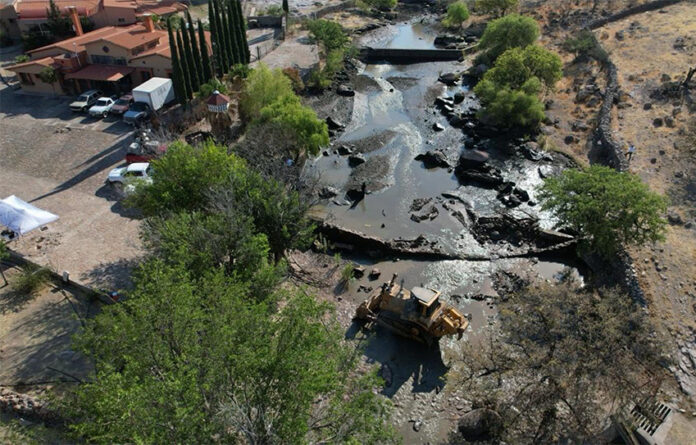Sinaloan boxer Eduardo Núñez crowned super featherweight champion in Japan
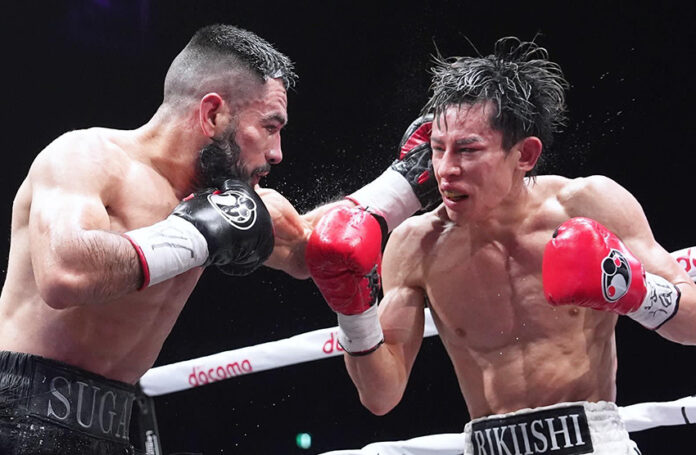
Mexican boxer Eduardo “Sugar” Núñez has been crowned the new International Boxing Federation (IBF) super featherweight world champion after a decisive victory in Yokohama, Japan, over Japan’s Masanori Rikiishi.
The 27-year-old native of Los Mochis, Sinaloa, won the vacant 59-kilogram (130-pound) title with a unanimous decision from the three judges, who scored the fight 117-111, 116-112 and 115-113, respectively, in favor of Núñez.
The 12-round bout was held Wednesday in 1-year-old Buntani Arena in Yokohama, Japan’s second-largest city.
With the triumph, Núñez took another step in establishing himself among Mexico’s boxing elite.
He improved his record to 28 wins and just one loss, with each of his first 27 wins coming by knockout — cementing his reputation as one of boxing’s most formidable punchers.
He is ranked seventh by The Ring magazine, which proclaimed that he “boxed brilliantly from start to finish and proved too much for a defiant Rikiishi” on Wednesday. Rikiishi, who’ll turn 30 on June 10, entered the fight with a 16-1 record.
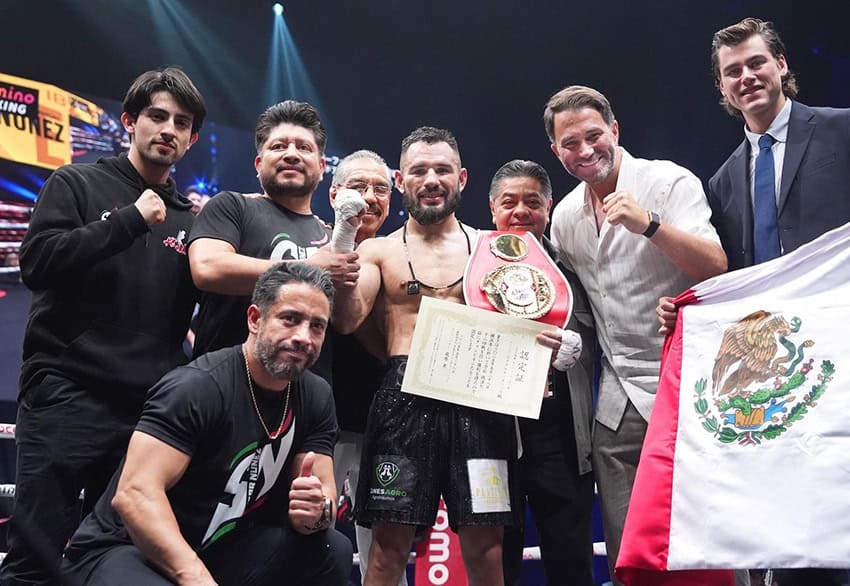
Núñez, who will turn 28 in July, began his professional career in 2015. His only loss occurred in 2018, in his 11th fight, a unanimous six-round decision at the Grand Oasis Arena in Cancún that went to Hiram Gallardo, a native of México state who since retired with a 12-5 record with two draws.
He earned the title shot by defeating former world champion Shavkat Rakhimov of Tajikistan in February 2024.
Núñez becomes the sixth current Mexican world champion across boxing’s divisions, spanning from flyweight (50.8 kg) up to cruiserweight (86 kg).
The others are Saúl “Canelo” Álvarez (undisputed super middleweight champion), Gilberto “Zurdo” Ramírez (WBA & WBO cruiserweight champ), Emanuel Navarrete (WBO super featherweight champ), Rafael Espinoza (WBO featherweight champ) and Ángel Ayala (IBF flyweight champ).
WBA stands for World World Boxing Association and WBO for World Boxing Organization; IBF was defined above. The fourth major world boxing sanctioning body is the World Boxing Council.
A short, two-part history of boxing in Mexico was presented earlier this year in the pages of Mexico News Daily.
In the fight on Wednesday, Núñez continually pressed the action, immediately taking the front foot and forcing Rikiishi onto the defensive. As the rounds progressed, Núñez’s early investment in body shots began to pay off, visibly tiring the Japanese fighter.
In the 10th round, Núñez sent Rikiishi reeling into the ropes with a perfectly timed overhand right. Rikiishi stayed upright, but Nunez’s intensity never wavered.
Afterward, Núñez had a video call with his family and dedicated the win to his brother.
“I feel very happy, very satisfied with the work we did tonight,” he said in his post-fight interview. “The truth is, we’ve been working for 10 to 13 years for this moment; thank God it arrived. We took advantage of the opportunity.”
He also dedicated the championship “to all of Mexico.”
According to his promoter, Eddie Hearn, Núñez’s next opponent could be Navarrete, the current WBO super featherweight champ who hails from San Juan Zitlaltepec in México state. Other possibilities include former WBA featherweight champion American Ray Ford of the U.S. or a different ranked contender.
Senators head to Washington to present case against US remittances tax: Friday’s mañanera recapped
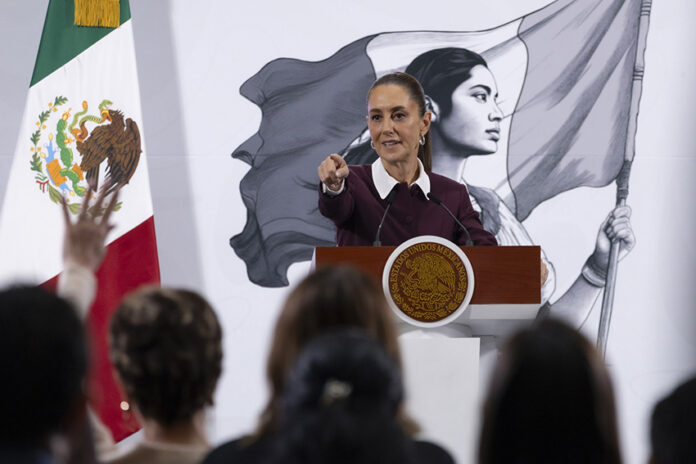
“Good morning. How are you? Ready for Sunday? Who’s going to vote?”
With those words, President Claudia Sheinbaum began her morning press conference on Friday, two days before citizens will go to the polls to vote in Mexico’s first ever judicial elections.
The elections are essential to rid Mexico’s judiciary of corruption, according to Sheinbaum and other supporters of the 2024 judicial reform, while government critics claim that installing judges by popular vote will lead to an erosion of judicial independence.
“Mexico is removing its last check on executive power,” screamed the headline of an opinion piece by The Washington Post’s editorial board that was published on Friday.
“The process is being sold as a mechanism to clean out an intensely corrupt justice system and bring more democracy to Mexico. But given the ruling Morena party’s overwhelming popularity among Mexican voters, the election will serve mostly to bring the judiciary in line with Morena’s interests,” the Post said.
Sheinbaum has predicted a large turnout, but the National Electoral Institute, which is organizing the elections, expects that just 13%-20% of eligible voters will cast a ballot.
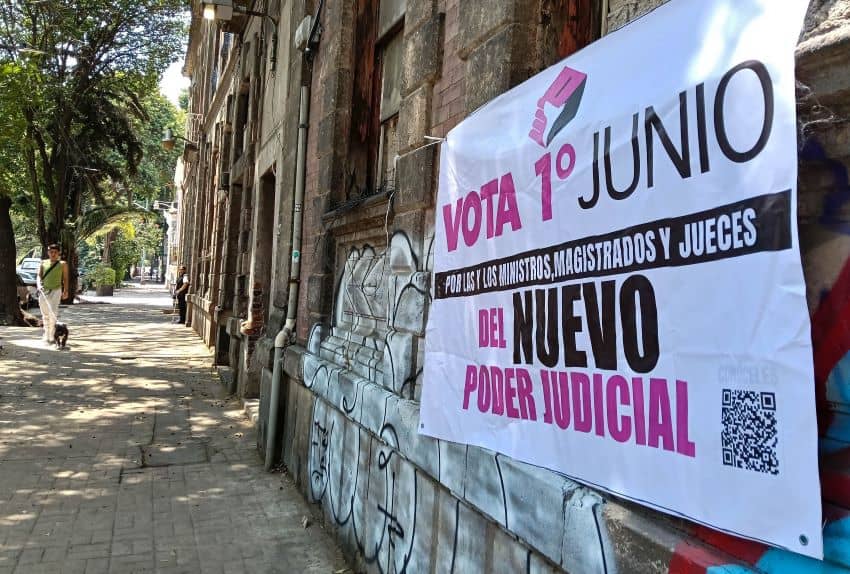
On Friday morning, the president — prohibited from promoting any individual candidates vying for almost 900 federal judgeships as well as some 1,800 local judicial positions — made a final plea to Mexicans to exercise their right to vote.
“Let’s all vote on Sunday!” she said.
Sheinbaum touts ‘good relationship’ with Carlos Slim
Early in her engagement with reporters, Sheinbaum was asked about her meeting on Thursday with Carlos Slim, a business titan who is Mexico’s richest person.
“He was here with his son as I’ve established a good relationship with the engineer Slim,” she said.
The octogenarian magnate, a graduate of the National Autonomous University’s civil engineering program, is “a very intelligent man, very educated,” Sheinbaum said.
“It’s always refreshing to hear his opinions,” she added.
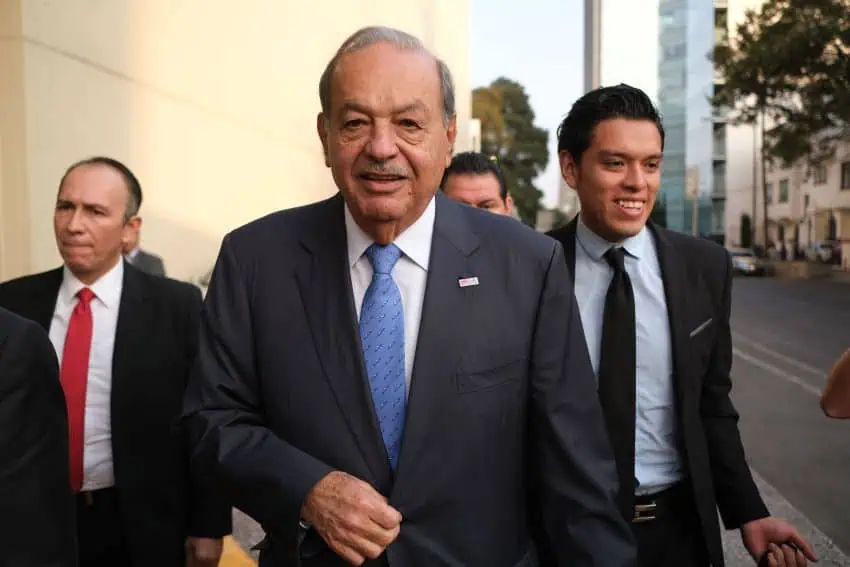
Sheinbaum said she spoke to Slim about “the current situation” in Mexico, touching on his views on Mexico’s relationship with the United States and his opinion about “the investments that are arriving.”
“It was very interesting to listen to him. … He’s very optimistic,” she said.
After a meeting with Sheinbaum last October, Slim — owner of companies such as Telcel, Telmex, Sanborns and Carso Infrastructure and Construction — said that Mexico can expect “many very good years in the future.”
Mexican senators to travel to Washington to present case against US remittances tax
“We’re going to try to inform all [U.S.] senators about the impact the tax on remittances will have,” Sheinbaum told reporters.
On Thursday of last week, the U.S. House of Representatives passed legislation that would impose a 3.5% remittance tax on funds sent abroad by individuals who are not U.S. citizens.
The U.S. Senate will now consider the measure, part of the “One Big Beautiful Bill” put forward by the Republican Party.
Sheinbaum called on Mexicans in the United States, “especially those who have dual nationality,” to contact U.S. senators and tell them “they don’t agree with this tax.”
She said that her government would do exactly that “from here.”
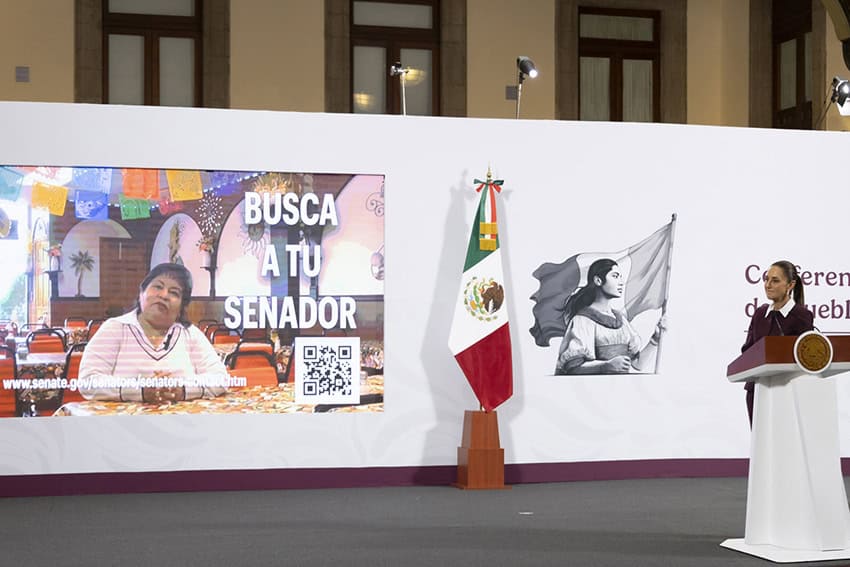
Sheinbaum noted that Mexican senators will travel to Washington, D.C., next week to speak with U.S. senators and “express their opinion” about the proposed tax.
The Mexican senators — who condemned the proposal in a statement earlier this month — represent “all the political parities, not just [the ruling party] Morena,” she stressed.
“… They’re going to present arguments [against the tax] and we will as well,” Sheinbaum said.
“… The compatriots [in the United States] and the people of Mexico should know that their government is here to support them always,” she said.
“… The Mexicans there already pay taxes and it’s unfair for them to pay double,” said Sheinbaum, who has asserted that the remittances tax is “unconstitutional.“
Sheinbaum offers an insight into her decision-making process
After noting that the first anniversary of Sheinbaum’s election victory is approaching, a reporter asked the president to nominate the most difficult decision she has taken since she was sworn in last October.
“The truth is that one takes decisions every day,” Sheinbaum responded.
“… There are decisions that are circumstantial, decisions that one has to take about priority and strategic projects,” she added.
Sheinbaum indicated that if she is unsure what decision she should take, she acts on her principles.
“If one has doubts, always the principles, you will never be wrong,” she said.
“In his time, President López Obrador used to say that ‘politics is principles and effectiveness,'” Sheinbaum said.
“But when you have doubts, … [when you’re asking yourself,] ‘do I go here? Do I go there? What decision should I take?’, always [go back to your] principles,” Sheinbaum said.
By Mexico News Daily chief staff writer Peter Davies ([email protected])
Mexicans prepare to vote in country’s first-ever judicial elections
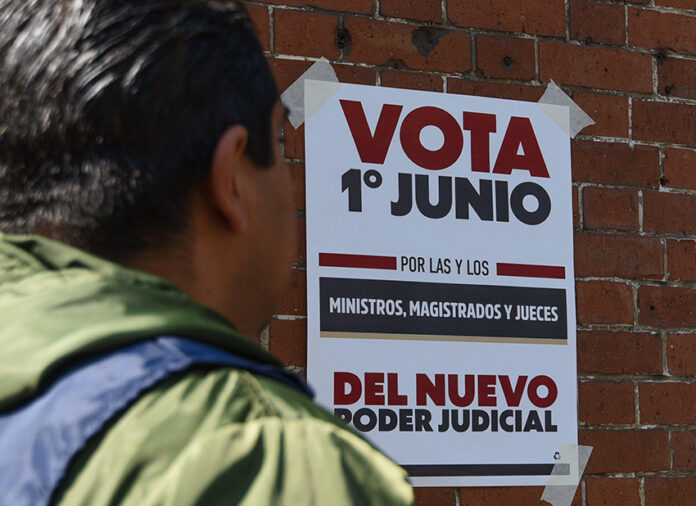
Mexicans go to the polls this weekend for an election like no other, as Mexico becomes the first country in the world to elect all its judges by popular vote. The Morena-led government says Sunday’s judicial election is the first step toward weeding out corruption in the judiciary system, but the process leading up to the elections has hardly been smooth sailing.
How will the elections work?
The judicial elections are the result of a constitutional reform promoted by former President Andrés Manuel López Obrador and supported by his successor, Claudia Sheinbaum.
Citizens will elect their judges, justices of the Supreme Court of Justice of the Nation (SCJN), and magistrates from across the country through popular vote. There are 881 positions available, including nine justices of the SCJN.
Unlike typical political elections, political parties cannot participate or publicly support candidates. However, several candidates are known to have political affiliations.
What could go wrong?
The landmark elections have attracted criticism from national and international civil society organizations, who warn that the new system could threaten judicial independence.
Both López Obrador and Sheinbaum have denounced the judiciary for corruption. They have also critiqued it for blocking several of López Obrador’s reforms.
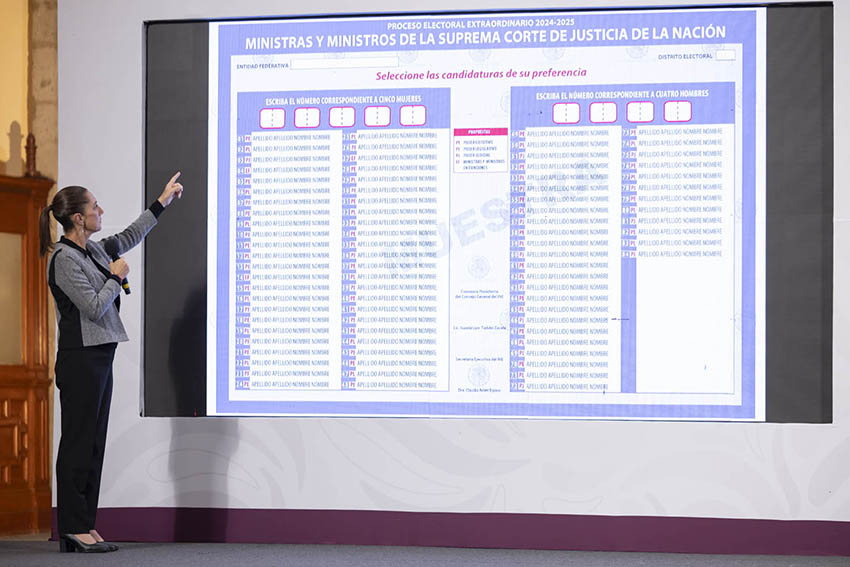
“[The judiciary] do not represent the people, but rather are representatives of the oligarchy, of the powerful,” López Obrador said in September 2024.
Opposition parties question how the change to the electoral system will tackle corruption and warn that the popular vote may encourage political actors and criminal organizations to support candidates in order to gain influence in the judiciary.
A Mexico United Against Crime (MUCD) analysis stated that “far from consolidating democracy, the popular election of members of the judiciary threatens to erode inclusion, limit informed participation, and compromise judicial independence, essential pillars of a balanced constitutional system.”
Low voter turnout expected
Recent surveys suggest that the public is ill-informed about the upcoming elections. An Enkoll survey conducted between May 18 and 20 among 1,023 Mexican adults revealed that less than 50% of those surveyed knew the exact date of the elections.
Of those surveyed, 72% said the judicial elections were “very necessary.” However, 77% did not know who the candidates for judges, ministers and magistrates were.
Candidates were not permitted to receive public or private funding, meaning they had to finance their own campaigns. Candidates could conduct restricted forms of advertising, including the use of flyers, social media and participation in events.

The National Electoral Institute (INE) launched an online portal called “Get to Know Them,” sharing the profiles and proposals of over 3,000 federal candidates.
The INE forecasts a turnout of between 18% and 20% of the population, compared to a turnout of over 60% in the 2024 presidential elections.
Several experts have voiced concern about the suitability of several judicial candidates in the upcoming elections.
Previously, the selection process for judges and magistrates included open competitions and exams and focused on merit and ability. However, the requirements for candidates in the elections now include a law degree, good grades, letters of recommendation and no prior prison sentences.
Controversy has surrounded certain candidates, with some accused or convicted of drug-related offenses, sexual abuse, corruption or ties to the criminal underworld.
The Washington Office on Latin America (WOLA) suggested that whatever happens on Sunday, these elections will provide lessons to improve the rules and logistics of the next judicial electoral process in 2027.
With reports from El Economista and CNN en Español
Water commission demolishes illegal dams built by Chihuahua ex-governor
Mexico’s National Water Commission on Thursday began demolishing an illegal dam on a ranch owned by a former Chihuahua governor, releasing water that could be used to help repay the country’s water debt to the U.S.
The process to dismantle the unauthorized infrastructure began on Tuesday when the water commission (Conagua) filed a complaint with the Federal Attorney General’s Office over the illegal use of at least 700,000 cubic meters of water.
President Claudia Sheinbaum defended the lawsuit, saying water is a national resource and cannot be privately appropriated without government-issued concessions.
Conagua’s operation was briefly interrupted when the ex-governor, César Duarte, obtained an injunction against the demolition of the dam.
After quickly overturning the court order on appeal, Conagua bulldozed the dam before moving to demolish reservoirs on the El Saucito ranch that held as much as 3 million cubic meters of water, according to reports.
The release and recovery of this water is linked to Chihuahua’s Río Conchos basin which is included in the 1994 water-sharing agreement with the United States.
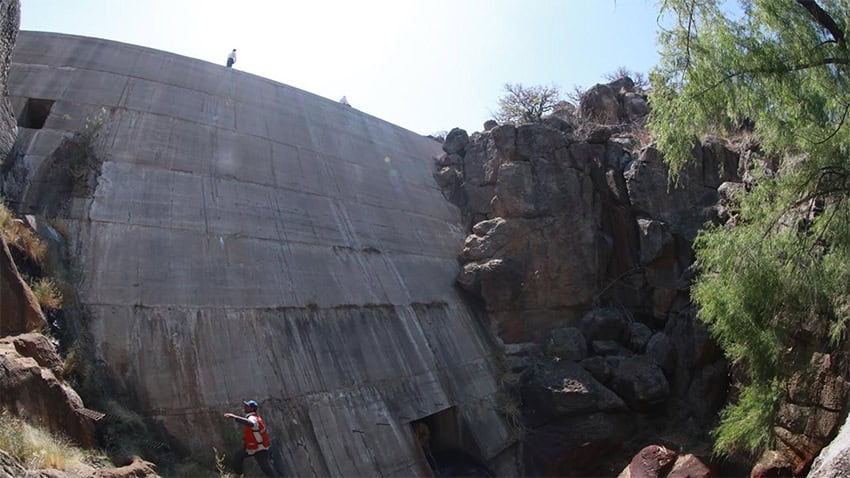
Sheinbaum said the government’s actions in El Saucito are part of a broader effort to regulate water concessions and ensure equitable access to water as a human right — especially in regions facing scarcity.
The president said her administration will continue to review all concessions to ensure proper use and registration, and will sanction any instances of unauthorized use.
The El Saucito ranch
While governor, Duarte — who served two years in prison for allegedly embezzling 96 million pesos (US $4.9 million) in government funds — built a dam, four reservoirs and a well at El Saucito without the proper permits.
Located in a remote, desert area of central Chihuahua, El Saucito was designed as a cattle ranch and walnut farm.
Duarte built the dam to redirect water from an arroyo (seasonal stream) that descends from the Sierra Madre Occidental. According to local Conagua representative Román Alcántar, the infrastructure prevented the water from draining into the Río de las Agujas, a tributary of the Río Conchos to the east of the ranch.
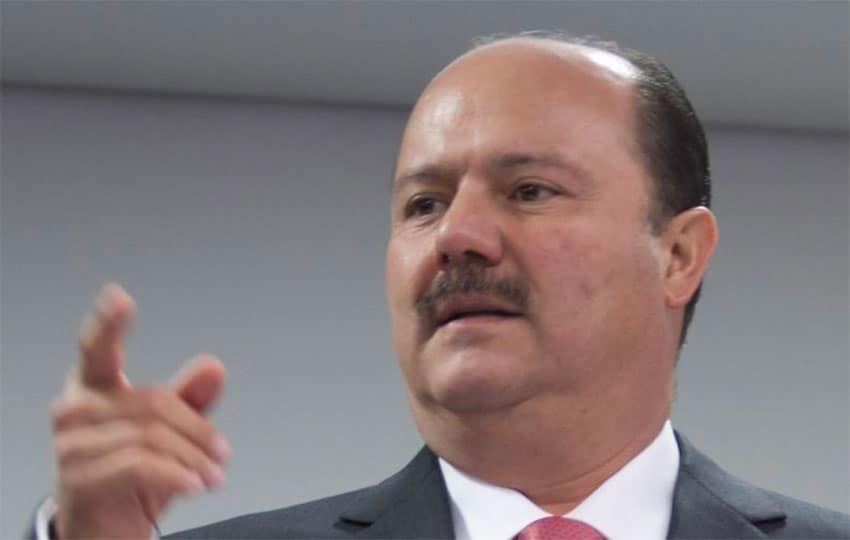
The Río Conchos is the main river in the state of Chihuahua and is one of only four permanent, year-round rivers in the state. It is a primary tributary of the Río Bravo, or Rio Grande, and features several dams, a few of which are used to share water with the U.S. under the 1944 U.S.-Mexico Water Treaty.
El Saucito is one of eight Duarte ranches that were confiscated by the government during criminal proceedings. The former governor, who was in office from 2010-2016, allegedly used public funds to finance improvements on these properties. El Saucito was reportedly the crown jewel.
Duarte was extradited to Mexico from the United States on June 2, 2022, almost two years after he was arrested in Florida on corruption charges. He was released from prison in July 2024, but still has 18 charges pending against him.
With reports from N+, Milenio, La Jornada, OEM and El País
LAFC and Club América to face off Saturday in Los Angeles for last spot in the Club World Cup
A week after losing in the Mexican league finals, fútbol giants Club América will face perennial MLS title contenders Los Angeles Football Club (LAFC) with a berth in the newly expanded FIFA Club World Cup at stake.
The winner of Saturday’s clash at BMO Stadium in Los Angeles will qualify for next month’s 32-team FIFA Club World Cup and receive a US $9.55 million payout, with the chance to earn US $125 million in the tournament.
💭 There’s a first time for everything…#FIFACWC 2025 is coming. 🔜
— FIFA Club World Cup (@FIFACWC) May 29, 2025
América will have to shake off Sunday’s disappointing 2-0 loss to Toluca, which deprived Las Águilas of a fourth consecutive Liga MX title. The Mexico City-based club boasts a league-record 16 championships.
For its part, LAFC — winners of three major trophies in seven years of existence — is off to a slow start this season. Despite an eight-game unbeaten streak (3W-0L-5D), the team sits sixth in the MLS’ Western Conference with a 6W-4L-5D record.
The play-in match was necessitated by FIFA’s disqualification of Mexican club León for violating the organization’s multi-team ownership restrictions.
FIFA regulations state that no single entity can control or exert influence over more than one club participating in the Club World Cup. The rule aims to prevent conflicts of interest and ensure fair competition.
Grupo Pachuca owns Club Pachuca and Club León, but since Pachuca qualified for the Club World Cup by winning the 2024 Concacaf Champions Cup, León — the 2023 Concacaf Champions Cup winner — was deemed ineligible.
To fill the final spot designated for a Concacaf franchise, FIFA decided to stage a playoff game featuring a Liga MX team against an MLS club.
León, Pachuca and Costa Rican side Alajuelense challenged the decision, but the Court of Arbitration for Sport rejected the appeals earlier this month, and FIFA confirmed the playoff match.
América was selected as the top club in FIFA’s Concacaf Club Rankings Index after the 2024 Concacaf Champions Cup.
LAFC was granted this opportunity as the 2023 Concacaf Champions Cup runners-up, losing 3-1 on aggregate to León during that two-legged final.
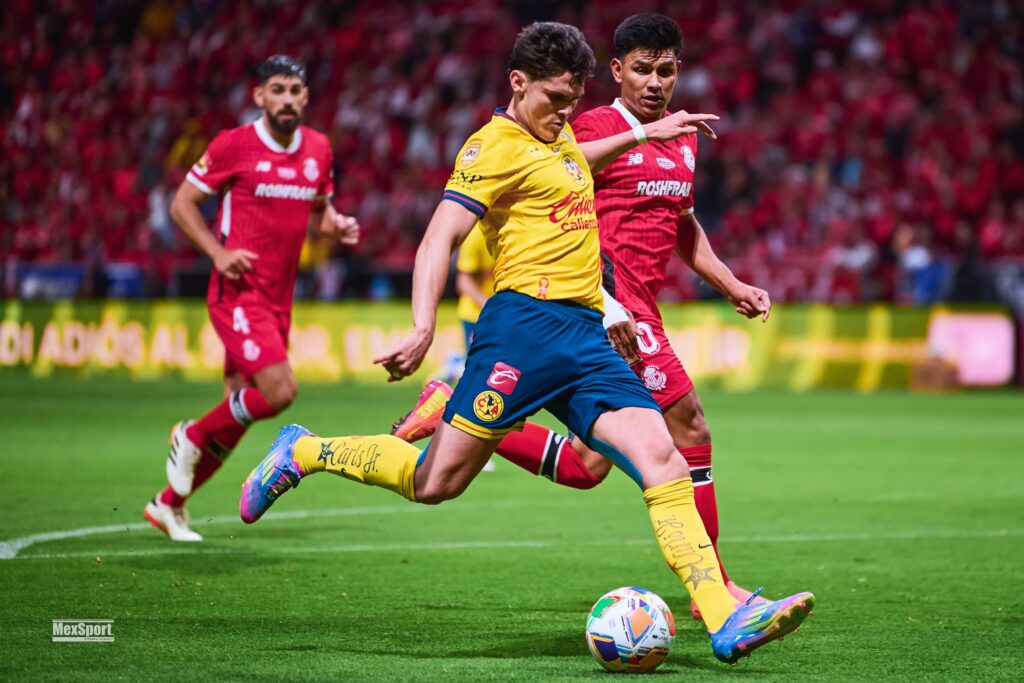
The match and what’s at stake
FIFA expects “an electric atmosphere befitting a match of incredible significance” at a sold-out BMO Stadium in downtown Los Angeles.
Longtime Águilas captain Henry Martín, Real Madrid academy product Álvaro Fidalgo and Team Mexico goalkeeper Luis Malagón are among the standouts in América’s star-studded lineup.
LAFC is led by winger Denis Bouanga, striker Olivier Giroud and goalkeeper Hugo Lloris. The latter pair were teammates on the French national team that won the 2018 World Cup and members of the France team that finished runner-up to Lionel Messi’s Argentina at the 2022 World Cup.
In three previous meetings, LAFC has yet to lose to Las Águilas in regulation.
The first encounter came in the 2020 Concacaf Champions League semifinals, with the MLS team winning 3-1. Mexican star Carlos Vela scored twice for LAFC, though The Black and Gold would go on to lose the final to Liga MX club Tigres.
In February 2022, LAFC handed América a 2-1 loss in a friendly at BMO Stadium. In August 2022, América defeated LAFC in a penalty shootout after the two teams played to a scoreless draw in a Leagues Cup Showcase match.
If Saturday’s game is even after 90 minutes, the clubs will play two 15-minute periods of extra time. If the score remains level at the end of extra time, a penalty shoot-out will follow.
The winner of the high-stakes play-in match will earn the right to compete in Group D at the Club World Cup, alongside Brazil’s CR Flamengo, Espérance Sportive of Tunisia and English side Chelsea, which won the European Conference League by defeating Spain’s Real Betis on Wednesday.
If LAFC wins, it would become the third MLS team to play in the Club World Cup, joining Inter Miami (qualified for this year’s tournament) and Seattle Sounders (2022).
América has played in three Club World Cups, finishing fourth in 2006 and 2016, and finishing fifth in 2015. The tournament only featured six teams in 2006, and seven teams in 2015 and 2016.
With reports from The Football Week, MLS Soccer and FIFA
The Mexico City Metro: Backbone of a sprawling transit system that gets Chilangos where they need to go
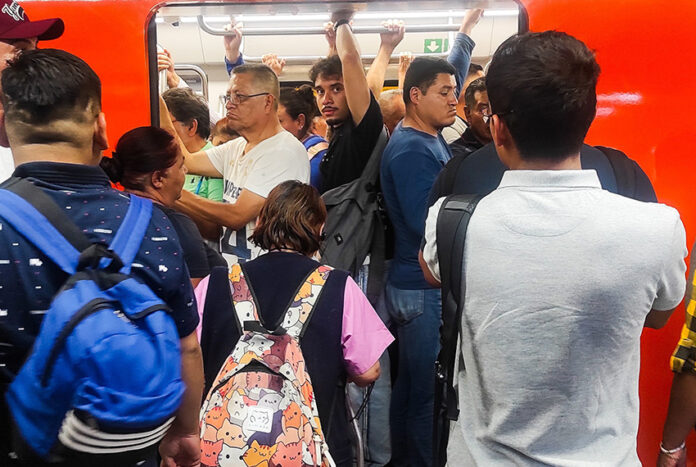
“The train car is the street, the Metro is the city, the ticket is the password to immerse yourself in the assembly of people, the crowd is the origin of the species, and the passenger (myself in this case, or any of the six million who come and go each day) accepts the hardships of coexistence.”
— Mexican writer and chronicler extraordinaire of Mexico City Carlos Monsiváis in his essay “Sobre el Metro las coronas.“
Apart from your most intimate relationships, you’re unlikely to get so close and personal with other people in Mexico City as you do when riding the metro system during peak hours.
Passengers took more than 1.1 billion trips on the Mexico City Metro last year, equating to 3.2 million journeys per day. Not quite the six million passengers Monsiváis referred to in his 1995 essay, but it can certainly feel like that is the correct number when your body is pressed up against one or more of your fellow travelers at 6 p.m. on a Friday evening.
The Mexico City Metro system is an immense art and anthropology museum, it is a bustling marketplace where all manner of goods and services are available for purchase, but first and foremost it is a massive public transit system, the backbone of a more expansive network of transporte público in the sprawling metropolitan area of the capital.
12 lines, 163 stations, 20,000 days of service
Intermingling psychedelic worms — a tangled assortment of multi-colored lines — superimposed on a white backdrop, stretching out over 11 of Mexico City’s 16 boroughs and into four municipalities of neighboring México state.

This is the map of the Mexico City Metro system.
The system today — 163 stations on 12 color-coded lines spanning 226.5 kilometers — developed from what was originally just one line, the pink Line 1, whose construction began in 1967 at a time when Mexico City desperately needed more public transit options to serve the needs of a population that grew rapidly in the 1950s and ’60s.
Twenty-seven months later, the work of 12,000 engineering experts and laborers was complete, and the first service ran between the Zaragoza and Chapultepec stations on Sept. 4, 1969, with both president Gustavo Díaz Ordaz and Mexico City mayor Alfonso Corona del Rosal on board.
Since that date, the Mexico City metro has operated every single day, meaning that it has now transported passengers on more than 20,000 consecutive days across a period of almost 56 years.

After the inauguration of Line 1 in 1969, more lines opened in the following years and decades until the system reached its current size when Line 12 — the golden line — began service in 2012. One of the Mexico City Metro’s worst-ever disasters occurred on this line in 2021 when two train carriages plunged onto a busy road in the capital’s southeast due to the collapse of an overpass. Twenty-six people were killed and close to 100 were injured.
There have been other accidents over the years, including a 1975 collision between two trains at the Viaducto station on Line 2 that claimed more than 30 lives.
The rapid — or arduous — commute
With a population of well over 20 million people in its metropolitan area, Mexico City needs more than a subway system to move its citizens.
The other public transit options — including Metrobús, light rail, suburban train, trolley bus, pesero and soaring cable car services — not only supplement the Metro but complement it as well, as many of their stations and stops feed passengers into the subway system, allowing them to complete their journeys.
In Mexico City, a public transit ride can be a quick zip up a metro line, and it can also be an hours-long, patience-testing odyssey (or ordeal) involving various modes of transportation. Commuters who come into central Mexico City from the surrounding metro area municipalities of México state face some of the longest trips.
One such person is Maura Hernández, a domestic worker who lives in the México state municipality of Nicolás Romero, located around 40 kilometers northwest of central Mexico City.
She told Mexico News Daily that she travels up to two hours by bus or “combi” just to reach the Cuatro Caminos Metro station in Naucalpan, México state, from where she completes her journey to the homes at which she works in Mexico City neighborhoods including Del Valle and Polanco.
It takes Maura up to three hours to reach her workplaces from her home, meaning she can spend as many as six hours per day on public transit in Mexico City and México state. With such long journeys, it’s no surprise that many commuters take the opportunity to catch up on sleep — if they’re lucky enough to nab a seat.
While her trip by metro is the shortest part of her urban odyssey, Maura noted that is often the most uncomfortable.
“It’s very crowded,” she said, noting also that the trains sometimes stop for as long as 10 minutes — a common frustration for metro users.

While long commutes are a fact of life for Maura and many other commuters, a new form of transport in Mexico City is reducing travel times for some.
The capital now has three Cablebús (cable car) lines that whisk passengers through the air and deposit them near the Indios Verdes (Cablebús Line 1), Constitución de 1917 (Line 2), Santa Marta (Line 2) and Constituyentes (Line 3) metro stations.
Last Friday, I made my way by metro out to the eastern terminus of Cablebús Line 2 at Santa Marta, located around 20 kilometers southeast of downtown Mexico City at a point where the capital meets México state. From there I took the approximately 40-minute ride to the western terminus at Constitución de 1917, where the metro station of the same name is located.
As I flew over the cinder block sprawl of the densely populated Iztapalapa borough, looking down at colorful murals, clothes drying in the high-altitude sun, countless “roof dogs,” roosters, hens and even urban swine, I spoke to a number of Cablebús passengers, all of whom told me that the four-year-old cable car line saves them a considerable amount of time compared to their previous commutes.
Enrique and Concha, a couple, said that their children also use the cablebús to get to school, thus avoiding a slow bus or combi ride to the Constitución de 1917 Metro Station through streets that are often winding and bumpy.
Another benefit, Enrique noted, is that the cablebús contaminates far less than many other forms of transport, significantly reducing emissions in a city known for its poor air quality.
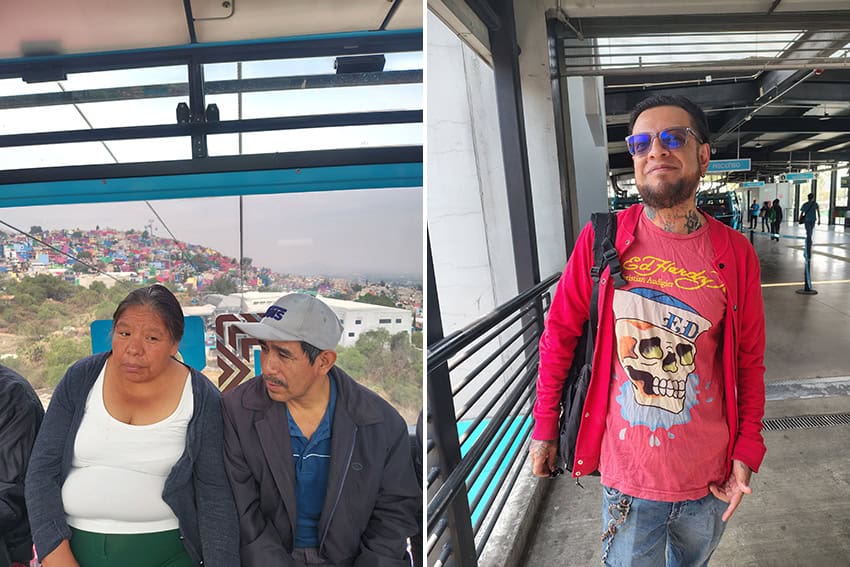
Ricardo, a tattoo artist, uses the smooth and almost-silent cablebús on a near daily basis to reach the metro and continue his commute to his workplace east of the historic center of Mexico City.
The Iztapalapa resident said the cablebús shaves an hour or more off his traveling time, and declared he had absolutely no complaints about the service. He said it wasn’t feasible for the government to extend the metro system into the hilly terrain over which much of Cablebús Line 2 runs, and therefore the next best thing was to have an aerial transport system that avoids traffic and connects to the subway at both ends.
Citing Mexico City’s Mobility Ministry, Bloomberg reported late last year that “the Cablebús system has more than halved trips that used to take an hour and a half by bus or taxi.”
Crowds are not a concern for commuters on this form of public transit as each car is limited to 10 people, all of whom have a designated seat. Stepping out of a cable car and into a metro train just minutes later can indeed be a jarring experience.
The subterranean class divide
Smart business clothes are definitely not the most common attire worn by metro passengers, and indeed the archetypal rider of the system is not a well-paid businessperson.
In fact, most well-to-do capitalinos and chilangos choose not to go underground to use the metro, instead preferring to battle the traffic-clogged streets in their own vehicles, in a ride-share, or even in a chauffeured car if they (or their family) has the means to pay a private driver.
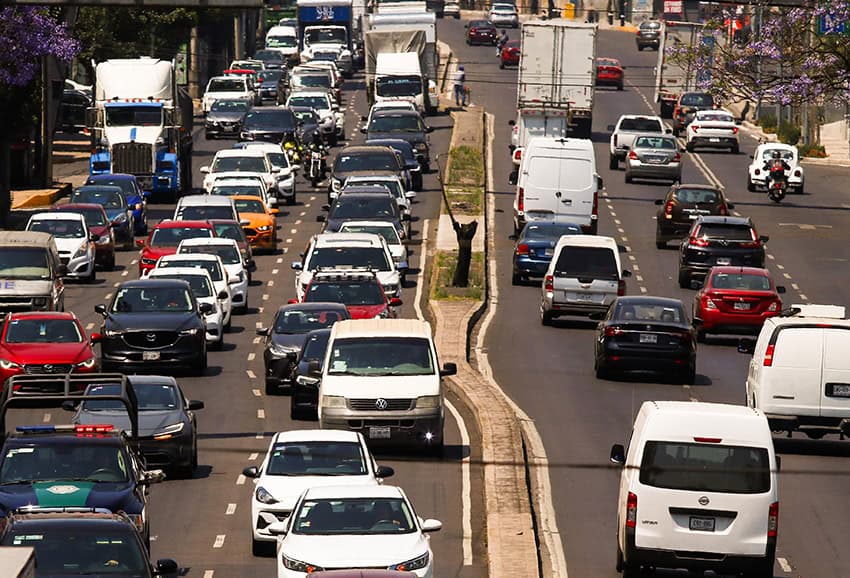
“A significant sector of the middle class and above simply don’t consider” public transport in Mexico City “an option,” VICE News reported in 2016.
Beneath the city — and “beneath me” — is the attitude of many middle and upper class Mexico City residents.
“It’s very different for people to be seen arriving in their own car than having to say that they use the subway or a pesero,” Ivonne Acuña Murillo, a sociologist, told VICE.
In addition to an understandable lack of desire to contort oneself into an uncomfortable position in an overcrowded train car, crime on public transit, including the metro, is also a concern for Mexico City residents. The fear of becoming a victim has only intensified recently due to a series of needle attacks in trains.
Still, the metro remains an indispensable way to get around the capital for millions of daily commuters, who part with 5 pesos (now deposited onto an “integrated mobility card” rather than exchanged for a paper ticket) and put their faith in the system to get them to work, to school, to university, to hospitals and health care clinics, and to countless other places on time.
“The low fare has made it one of the primary modes of transportation for the city’s working class, who use it in combination with other forms of public transportation to reach jobs in distant parts of the metropolis,” states the 2018 academic paper “The Mexico City Metro and its Riders.”

All kinds of workers use the metro to get to work — even clowns such as Agustín, who I met on a recent trip on Line 12. He told me that he uses the metro to get into central Mexico City from the southeastern borough of Tláhuac, where he lives, to entertain children at facilities operated by the DIF family services agency. Given that he asked me for some spare change at the end of our conversation, I concluded that while he may well have a talent to get people rolling in the aisles, he’s not exactly rolling in it himself.
But at just 5 pesos (about US $0.25) a trip, the Mexico City Metro is one of the most affordable mass transit systems in the world, meaning that even the most economically-stressed people can generally join the underground parade and perhaps get themselves to a job where they can work toward improving their financial situation.
According to the 2009 paper “Is the Mexico City Metro an inferior good?” the Mexico City metro “adopted a low fare mechanism with the provision of only one type of ticket regardless of the distance travelled so that the poor peripherally located population could afford the service.”
So is the metro, as the aforesaid article asks, an inferior good for Mexico City residents — an item (or service) that becomes less desirable as the income of consumers increases?
People’s class — or perhaps better put their purchasing power — is, in many cases at least, the determining factor in how they see the metro.
Through research, modeling and other methods, the authors of the “inferior good” paper found that “for the majority of metro users, whose salaries are based on low multiples of the minimum wage and are not potential car owners, the Mexico City metro is perceived as a normal good.”
“However, for middle/high income earners, who can afford to buy a private vehicle when their incomes increase, the Mexico City metro is perceived as an inferior good,” the paper said, providing an academic explanation for the subterranean class divide.
The rider experience, from the first car to the last
I have been a regular passenger on the Mexico City Metro for over a decade, using the system at almost all times of the day (it closes between midnight and 5 a.m.) to move around the enormous capital.
Yes, on plenty of occasions I have suffered amid a sea of fellow passengers jam-packed into a train car. Yes, I have been a victim of crime — my cell phone was once pickpocketed while riding Line 1 in the morning rush. Yes, I’ve grown frustrated as I stood on the platform and watched crowded train after crowded train go by without any possibility of getting on myself.
🇲🇽 México Mágico en el metro 🇲🇽 pic.twitter.com/wCgdRBbudE
— 🇲🇽 México Mágico ✨ (@EnMexicoMagico) January 13, 2020
A young man even once whispered “fuck you” into my ear for no discernible reason as I alighted a train.
But all in all I’ve had a great experience riding and passing through the stations of the Mexico City Metro. I’ve enjoyed the amazing art, I’ve gotten to where I needed or wanted to get and the train cars in which I’ve traveled have mostly been clean.
I’ve also witnessed some incredible in-carriage performances — including, I should say, some very confronting ones in which mainly shirtless men purposefully harm themselves by throwing themselves onto shards of broken glass in an attempt to shock passengers into handing over a coin. A whole other story.
I am, of course, aware that the experience of riding the metro can be very different for men and for women, who face a greater risk of sexual harassment and abuse.
One initiative aimed at ensuring the safety of female passengers is the designation of “women only” metro cars, which were first introduced in Mexico City in 1970, the year after the system opened.
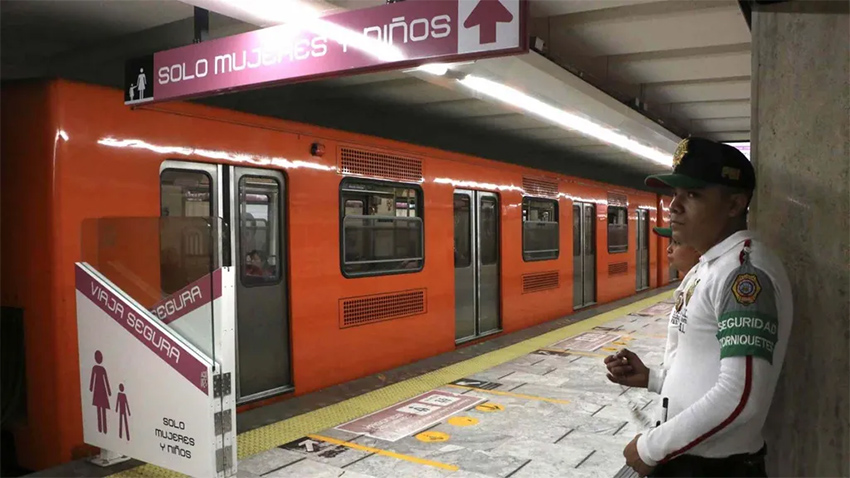
The initiative was formalized and expanded in 2000, with access to the first two cars on trains running on several lines limited to women and children under 12 during designated periods of the day. While the success of the initiative has been limited, and sexual harassment and abuse still occur on the metro, women-only metro cars do offer some “respite” for women in Mexico City, if not from the crowds, as journalist Madeleine Wattenbarger wrote in a 2017 essay for Literary Hub.
“The women’s cars are no gentler than the others, or more spacious, or less crowded. If anything, passengers push each other more persistently, unfettered by any fear of indecency that may lead men to defer every so often. Still, I find them sororal and collaborative. When I can’t reach a pole to grab for balance, a woman offers me her shoulder,” Wattenbarger wrote.
“It would be foolish to entertain the notion that the overwhelming female-ness of this space guarantees its safety. Still, I rarely inhabit public spaces that are so predominately female; rarer still do I find spaces designed to be that way. … In the women-only car, though, I experience a respite, however fleeting and illusory, from the anxiety of carrying around my body.”
While a sororal bond might unite female passengers at the front of the train, male metro users sometimes come together in an altogether different way at the back. The final car, or último vagón, of metro trains in Mexico City is known as a gathering place for gay men, a mobile cruising ground where first encounters can quickly turn erotic.
“I had heard rumors about men having sex in Mexico City’s subway system. But nothing prepared me for what I witnessed on my first ride in the último vagón,” wrote author and academic A.W. Strouse in an article published by The Nation last December.

“… The historian Alonso Hernández Victoria notes that gay men have used Mexico City’s subway for sex, romance, and other encounters since it opened in 1969,” Strouse wrote.
The occasional homoerotic culture of the último vagón was also explored by photographer David Graham in his 2017 book “The Last Car: Cruising in Mexico City.”
Moving people, driving forward the economy
Given that it moves so many workers on a daily basis, the economic importance of the Mexico City Metro system cannot be overstated.
It is transport system that is “absolutely necessary for the functioning of the urban economy as a whole,” academic Diego Antonio Franco de los Reyes wrote in an article published by Revista Común.
In an article for Nexos, economist Carlos Brown Solà described the metro as “the heart that makes the metropolis beat.”

That metropolis is Mexico’s economic powerhouse, generating close to 15% of Mexico’s total GDP in 2023. Add in neighboring México state, which includes many municipalities that are part of the Mexico City metropolitan area, and the share of national GDP increases to around 24%.
Without a generally reliable subway system that quickly gets millions of workers to their workplaces on a daily basis, Mexico City’s economic capacity and productivity would no doubt be significant diminished.
Public transit in general “provides mobility options, generates jobs, spurs economic growth and supports public policies regarding energy use, air quality and carbon emissions,” according to the American Public Transport Association.
In Mexico City, the metro system has helped to connect informal sector workers to formal jobs, according to World Bank research economist Román David Zárate.
The construction of Line B of the Mexico City metro, which was completed in 2000 and links central Mexico City to Ecatepec, México state, “sent broad economic ripples through the local housing and labor markets, leading informality rates to fall by as much as seven percent in locations close to the new stations,” said a World Bank article based on research carried out by Zárate and others.

“When new transport infrastructure such as Bus Rapid Transit or metro lines reduce travel time between locations, new places gain access to jobs and the formal labor market becomes more attractive,” Zárate said.
Around half of all workers in Mexico City work in the informal sector, but without an expansive metro system that provides people with easy access to formal employment hubs, research indicates the percentage would be even higher.
The future of the Mexico City Metro
There are currently no plans to add new lines to the Mexico City Metro, but the prime public transit system in the Valley of Mexico, and the transport tributaries that flow into it, continue to expand.
Work has begun on the expansion of Line 12, which will connect with the Observatorio station on Line 1 when the project is completed, perhaps in late 2027. Sometime later this year, the new Toluca-Mexico City train line will reach Observatorio, allowing passengers to immediately access the metro system and thus reduce their total travel time between the México state and national capitals.
Also in 2025, Mexico City residents and visitors will be able to travel to the Felipe Ángeles International Airport in México state from the Buenavista Suburban train station, located just outside the historic center and adjacent to the Buenavista metro station.
Like millions of metro passengers, these infrastructure projects have faced delays.
But just as the gusanos naranja (orange worms) — as the metro trains are colloquially known — invariably resume their forward progress after stoppages and reach their final destinations, so too will the transit projects. Have faith that, in time, they will help propel passengers, the economy, the city and even the nation of Mexico as a whole to where they need — and want — to be.
By Mexico News Daily chief staff writer Peter Davies ([email protected])
* This article is the third and final part of a Mexico News Daily series on the Mexico City Metro. Follow the following links to read parts 1 and 2.
The top 3 challenges facing Mexico’s energy sector: An interview with the Institute of the Americas

Setting Mexico on a path toward a sustainable and reliable energy future is a critical challenge for President Claudia Sheinbaum and her administration.
A lot has happened during her first eight months in office, but there is no doubt that much more needs to be done as demand for energy in Mexico — including from the vast industrial sector — continues to grow.
Last October, during the president’s very first month in office, the Mexican Congress approved an energy reform that stipulates that the state-owned Federal Electricity Commission has the constitutional right to generate and supply the majority (54%) of electricity in Mexico.
In addition to firmly supporting the state’s primacy in Mexico’s electricity sector, Sheinbaum — a climate scientist — is committed to advancing the use of renewable energy sources, a key differentiation between her and her political mentor and predecessor Andrés Manuel López Obrador, a champion of fossil fuels.
Balancing her commitment to the clean energy transition while ensuring Mexico’s growing demand for electricity is met will be no easy task for Sheinbaum, who is also intent on achieving energy sovereignty, including self-sufficiency for gasoline, even as the output of the heavily-indebted state oil company Pemex continues to fall.
Yes, the energy challenges for Mexico’s first female president and her administration, as well as the energy sector itself, are indeed many.
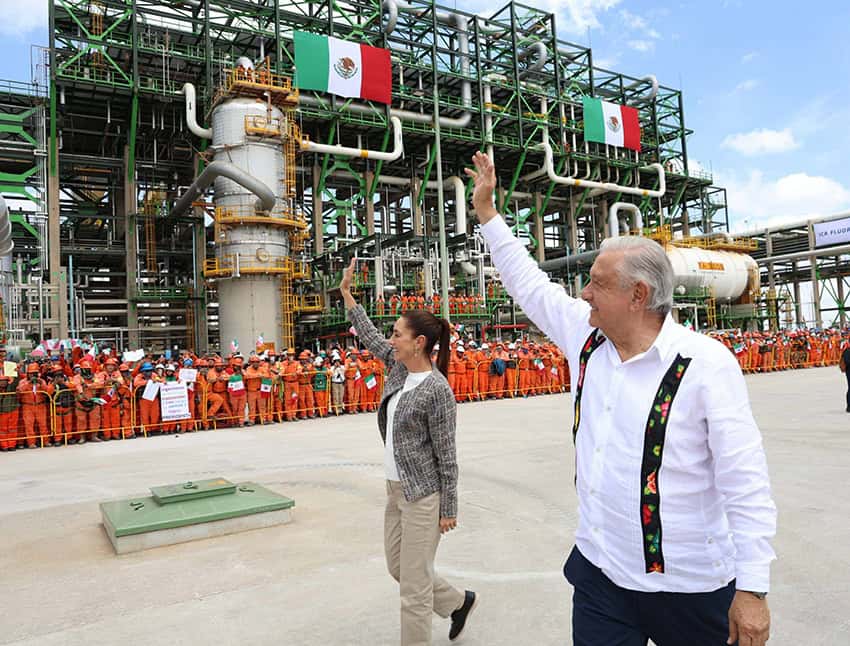
One institution that is highly cognizant of these challenges is the San Diego-based non-profit public policy center Institute of the Americas (IOA), which has run an “Energy & Sustainability program” for over 30 years and has long maintained a close interest in energy issues in Mexico.
Mexico News Daily recently spoke about Mexico’s energy challenges and the country’s energy landscape more broadly with IOA President and CEO Richard Kiy, the public policy center’s vice president for energy and sustainability, Jeremy Martin, and non-resident fellow and energy expert Leonardo Beltrán.
In a subsequent email to Mexico News Daily, the University of California-based IOA set out what it see as “three very important challenges” for the energy sector in Mexico, while acknowledging that the full list of challenges is “extensive.”
Mexico needs to provide additional ‘clarity’ to private sector energy companies
While the aforementioned energy sector reform limits the participation of private and foreign companies in Mexico’s electricity sector, it does not preclude them from playing an important role in ensuring that Mexico can meet demand for power and make the transition to greater use of clean energy sources.
The IOA told Mexico News Daily that “the need for clarity as to the private sector’s involvement in Mexico’s energy sector” is paramount.
While secondary laws supporting the energy reform and setting out the rules for private sector investment passed Congress earlier this year, the IOA believes additional clarity is required.
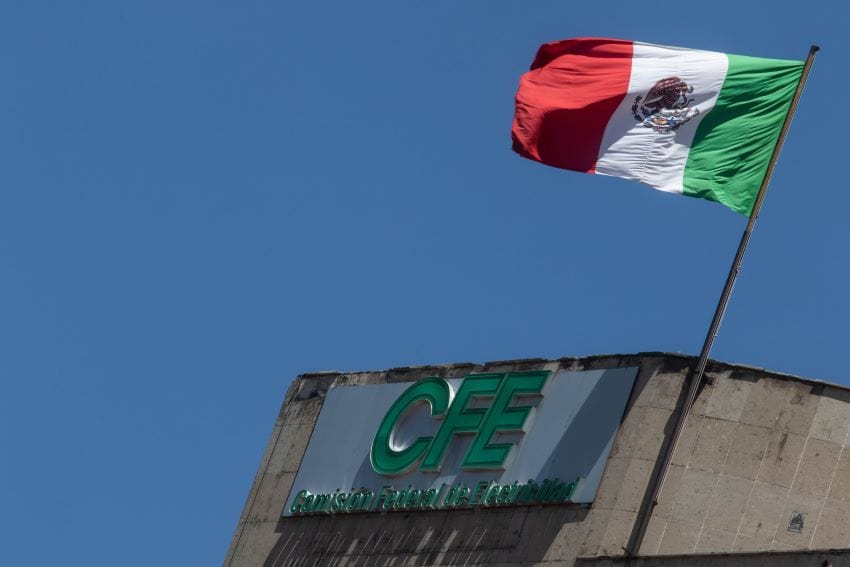
“The law has set forth very clearly the primacy of the state and state-owned enterprises in the energy sector, but at the same time has not ascribed exclusivity. Indeed, there appears to be areas for engagement by the private sector and those demand further clarity in the regulations and a collaborative approach to the government’s approach to meeting its energy goals,” it said.
Mexico needs to ‘reinvigorate’ investment in clean energy
The IOA said that “a related challenge is reinvigorating investment in renewable and clean energy.”
“Mexico has some of the world’s most important wind and solar resources, as well as geothermal and hydro, but they have not been sufficiently developed,” the policy center said.
The federal government presented more than 50 new electricity projects earlier this year, including wind and solar ones, and the massive Puerto Peñasco solar park in Sonora is already partially operational.
During the president campaign last year, Sheinbaum pledged to invest more than US $13 billion in a renewables-focused energy plan if she became president.
Indeed, there is plenty of renewable energy potential for Mexico to tap into — as IOA indicated, and the federal government recognizes. The private sector can also play a key role in the energy transition in Mexico, as the federal government has acknowledged, as Latin America’s second-largest economy seeks to do its bit to help mitigate climate change.

The IOA noted that “the Sheinbaum administration has set a goal for clean energy generation of 45% by 2030.”
“How to reach that goal under the current legal and regulatory framework demands more clarity and explanation from the administration on how private sector can help materialize that vision,” it said.
Another challenge to address: Dependence on US for natural gas
The IOA told Mexico News Daily that “the geopolitics and broader context for U.S.-Mexico relations is particularly important as it relates to energy flows and the massive dependency Mexico has on imported natural gas from the United States.”
During López Obrador’s six-year term as president, Mexico’s imports of natural gas from the United States increased to hit a record high in the first nine months of 2024. The increased reliance on U.S. natural gas imports coincided with a decline in domestic production.
“By some estimates,” the IOA said, “over 70% of the natural gas in Mexico comes from the U.S.”
“During the polar vortex of 2021, when major cuts to gas pipeline exports from Texas were seen, the dependency was painfully obvious,” the public policy center added.
Natural gas shortage triggers major power outage; nearly 5 million affected
Northern Mexico endured major power outages due to the interruption in the natural gas supply in early 2021, allowing López Obrador “to use the days-long supply shock to illustrate the perils of over-reliance on a foreign supplier and provide it as proof that Mexico needed to be self-sufficient in energy,” as the Financial Times reported at the time.
The IOA highlighted a report by The New York Times last month that stated that “Mr. Trump’s return to power is now causing many in Mexico to rethink this arrangement [of natural gas dependency], especially as he makes claims on the territory of other countries in the Americas like Canada and Panama.”
The Times’ report also said that “natural gas has eclipsed oil as the country’s largest single fuel source, and is used to produce 60 percent of Mexico’s electricity.”
“An interruption of the flow of gas to Mexico would be beyond chaotic,” W. Schreiner Parker, managing director for Latin America at research firm Rystad Energy, told the Times.
“It’s truly one of the unspoken reasons why Sheinbaum has been so accommodating to Trump,” he said.
One way in which Sheinbaum is seeking to safeguard against any future gas flow interruptions is by increasing storage capacity in Mexico.

“The government of Mexico is expediting negotiations with private companies to double the capacity for the strategic storage of natural gas … due to fear that United States President Donald Trump could use the country’s strong dependence on the fuel as a means to pressure [Mexico] in trade negotiations,” Agence France-Presse reported earlier this year citing “three sources with knowledge of the matter.”
While increasing storage is viable, reducing the reliance on U.S. natural gas will be no easy feat given that Mexican production has been declining and Mexico’s demand for electricity is set to continue to grow.
‘Sufficient, affordable and sustainable energy supplies’ crucial to attracting new investment
To discuss these energy challenges and other Mexican energy sector issues, the IOA is holding an event focused on electricity and natural gas in Mexico at the Hotel Hyatt Regency in Mexico City next Thursday June 5. Energy Minister Luz Elena González is among the scheduled speakers.
The IOA said that the staging of its event is timely as “the changes in the energy sector are very fresh and require deeper levels of understanding.”
“It is a key moment for implementation and consolidating the final legal rules and norms,” the public policy center said.
The IOA also noted that the energy sector will play a key role in helping the government reach the goals it has set out in its ambitious Plan México economic initiative, among them an aim to significantly increase electricity generation by 2030.
“Further, there’s been a great deal of attention and focus on nearshoring and how Mexico is positioned to capture important manufacturing and industrialization investments. But none of that is possible without sufficient, affordable and sustainable energy supplies,” it said.
More information about the upcoming IOA “roundtable” in Mexico City — which members of the public can register to attend — is available on the event website.
Mexico News Daily
Aeroméxico strike could disrupt flights starting Sunday
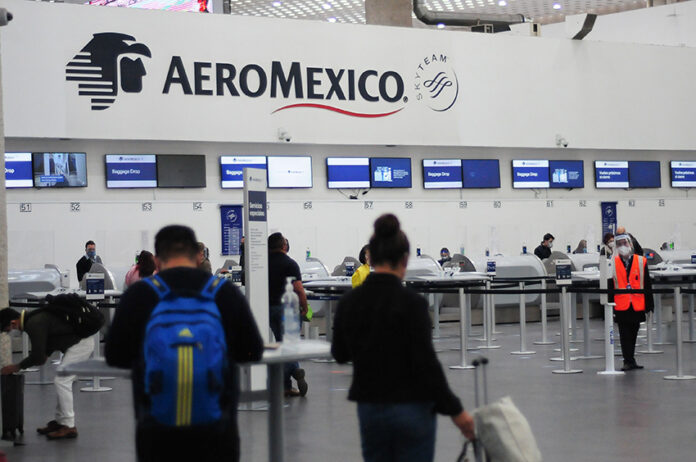
A flight attendant strike could disrupt Aeroméxico operations starting Sunday unless a new salary agreement is reached in the coming days, according to the Mexican Aviation Flight Attendants Union (ASSA).
ASSA reported that meetings were held with the Federal Center for Conciliation and Labor Registration on Monday and Tuesday to address the salary issue, but no agreement has yet been reached.
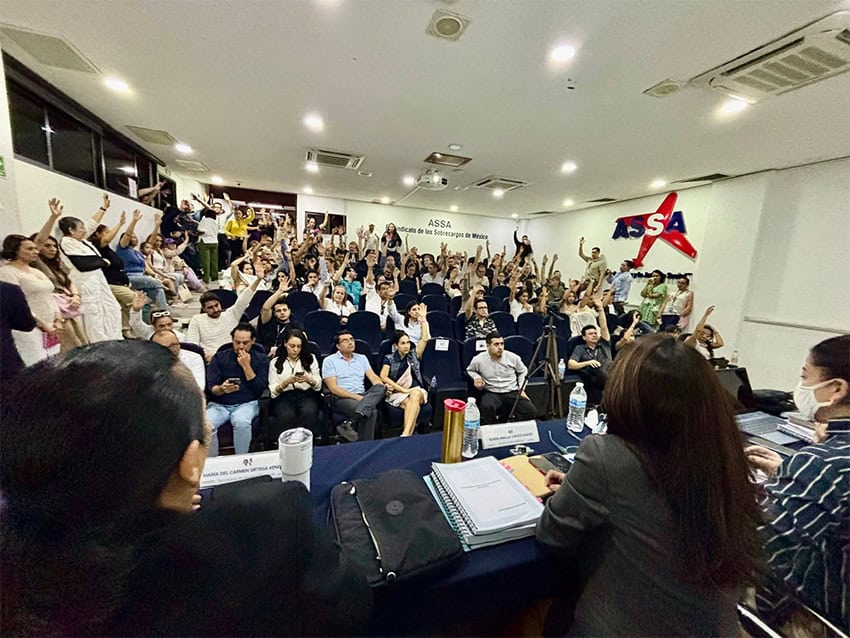
Flight attendants at Aeroméxico, Mexico’s second-largest airline, said salaries for both senior and junior staff have not kept up with inflation in recent years.
Flight attendants present at the May 21 Extraordinary General Assembly rejected Aeroméxico’s proposed salary increase of 2.9% for senior workers and 3.25% for junior employees.
If an agreement is not reached by Sunday, staff are expected to strike starting on the first minute of June 1. This coincides with the voting date for Mexico’s judicial elections.
Flight attendants previously planned a strike during the presidential elections on June 2, 2024. However, no strike action was taken as Aeroméxico agreed upon a 4.6% salary increase.
The company’s flight staff are requesting a salary increase of at least 4.13%, based on annual inflation from May 2024 to 2025.
The aim is to “recover the accumulated purchasing power deficit from 2020 to 2024, equivalent to 12.12% compared to a cumulative inflation of 29.89%,” according to the ASSA.
“The flight attendants’ struggle goes beyond achieving a raise; the goal is to recover the wage gap in relation to the increase in the cost of living, as well as the outdated increase in the minimum wage,” the union said.
The ASSA reported that 60% of workers (1,860 employees) are classified as junior staff and earn just 1.8 times the minimum wage.
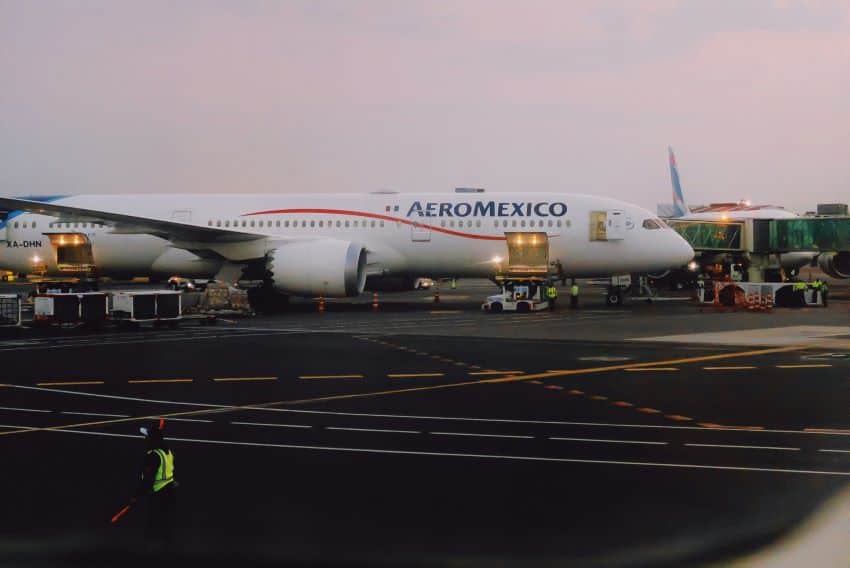
This “prevents them from accessing housing, obtaining credit, or having enough payroll to pay for life insurance … among other essential needs,” according to the union.
In a last-ditch attempt to resolve the dispute, another Extraordinary General Assembly is planned for 3 p.m. on Friday.
Pay cuts and bankruptcy rebound
Like many airlines, Aeroméxico suffered from severe revenue losses during the COVID-19 pandemic. This led the airline to file for bankruptcy protection in 2020 and to delist from the New York Stock Exchange.
During the pandemic, Aeroméxico announced widespread pay cuts. A salary reduction agreement was signed with pilots and other staff during this time as the firm attempted to weather the storm.
Aeromexico came out of the bankruptcy process in 2022 and announced plans in March 2023 to relist on the U.S. exchange. However, in February, Aeroméxico’s CEO Andrés Conesa said market conditions were not ideal for the company to list in New York.
The carrier will list “as soon as market conditions allow,” Conesa told journalists. “We aren’t in a rush,” Conesa said, adding the initial public offering (IPO) would come “whenever shareholders decide to sell.”
With reports from El Financiero, El Economista, El País and Reuters
Despite regulatory complexity, investment in Mexico remains high
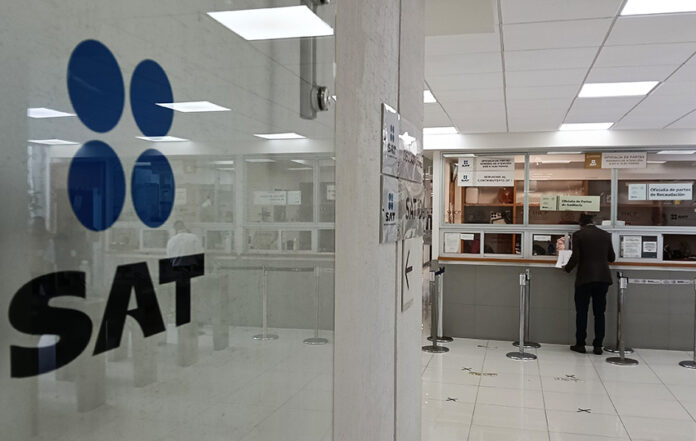
Mexico ranks as the third most challenging country in the world to do business, according to the Global Business Complexity Index (GBCI) 2025, an annual ranking that evaluates the regulatory complexity of doing business in 79 countries that collectively account for 94% of global GDP.
The index, published by accounting group TMF Group, saw Mexico move up one position this year after it came in No. 4 last year. This consolidates its position as one of the most complex economies in terms of regulation, taxation, and administration.
Yet, this has not discouraged investments in the country.
In the report, TMF Group notes that, despite the volatile context, interest in Mexico remains undiminished. Many companies are not only maintaining their investment plans but are also investing in the long term.
“What we see most in our business is that investment continues unabated. It’s coming from the United States, Europe, and China, with companies determined to establish themselves here,” Dunia Salomón, managing director for TMF Group in Mexico, told Expansión magazine.
She said that the country attracts investment because of its strategic geographic location and its network of trade agreements, key to nearshoring. Despite the uncertain environment and recent reforms in labor and judicial matters, Mexico remains open to the public.
“It has challenges, but it hasn’t stopped being competitive,” adds Dunia Salomón.
The increased complexity of doing business in Mexico is due to multiple factors, Salomón said. One is that there is also a lack of uniformity in the application of regulations: one office may require five requirements, while another may require six for the same permit. Digitalization is advancing, but it has not yet completely replaced in-person procedures. This creates bottlenecks, especially after the pandemic, when demand increased and operational capacity had not fully recovered.
Mexico also lost ground compared to other countries on the ranking, which made faster progress in simplifying their regulatory processes.
Meanwhile, TMF Group notes that the main challenge isn’t the complexity itself, but rather the uncertainty surrounding some processes and the ambiguous interpretation of certain rules.
Salomón thinks that for investors, “the key is to have a clear action plan and surround themselves with experts who understand the local environment.”
“The country is attractive, but it requires preparation. It’s not enough to apply the same formula as in other jurisdictions. Here, you need local advice, patience, and knowledge. That’s the difference between successful expansion and failure,” says Salomón.
As part of Plan Mexico and to boost investment, the government created the National Digital Investment Window, which provides guidance and support for foreign companies. TMF’s general director in Mexico said that the results of this initiative would be reflected between 2026 and 2027. By then, Mexico should show progress in simplifying procedures and reducing administrative barriers. If it manages to implement these measures, it could move down the ranking of the complexity of doing business.
With reports from Expansión

